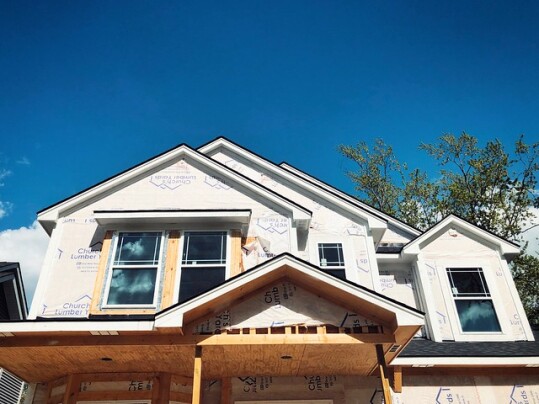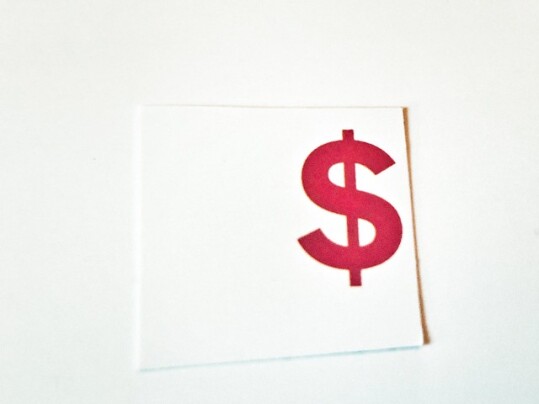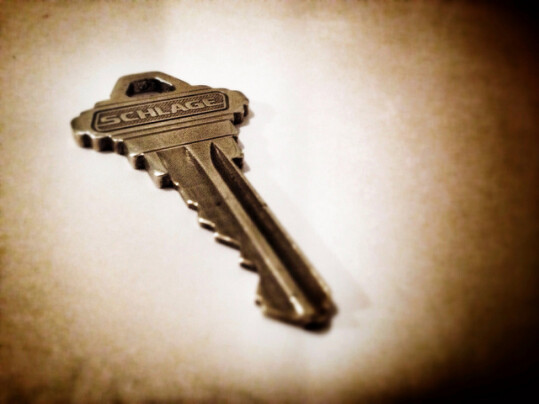By now, everybody knows the housing market’s hot. They’re probably also familiar with the factors that have kept it buzzing. Low mortgage rates and the increasing number of Americans working remotely are just a couple of the now well-known drivers of recent buyer demand. But just how competitive is the spring market? Well, according to one recent analysis, 72 percent of the homes sold in April faced competition. In other words, nearly three-quarters of the homes sold during the month had more than one interested buyer. And that’s up almost 4.5 percent from the month before. But it shouldn’t be a surprise that the real-estate market isn’t cooling down. After all, spring and summer are typically the busiest months for home sales. It’s also when homeowners who want to sell – rather than need to – put their homes on the market. That means, the homes listed now are more likely to have been upgraded and prepped for sale, which raises the competition for them even higher. (source)
Archive for May 2021
Conditions Help Keep Builder Confidence High
Because home builders have a unique perspective on the housing market, the National Association of Home Builders conducts a monthly survey to gauge how confident they are in the market for newly built homes. Their responses are scored on a scale where any number above 50 indicates more builders view conditions as good than poor. In May, the NAHB’s Housing Market Index held steady at 83, unchanged from the month before. Chuck Fowke, NAHB’s chairman, says there are a few factors that have builders feeling optimistic about the market. “Builder confidence in the market remains strong due to a lack of resale inventory, low mortgage interest rates, and a growing demographic of prospective home buyers,” Fowke said. “However, first-time and first-generation home buyers are particularly at risk for losing a purchase due to cost hikes associated with increasingly scarce material availability.” It’s true. Construction costs – including the price of lumber – have spiked over the past year. That means, home buyers interested in buying a new home should expect rising prices, at least, through the end of 2021. (source)
Neighbors Have Become More Neighborly
In times of crises, people tend to come together. That’s certainly been true over the past year. The coronavirus pandemic meant we all had to look out for one another a little bit more than usual, and we did. Especially, closer to home. In fact, according to one recent analysis, the pandemic led to an immediate uptick in neighborhood outreach. We started relying more on the people in our own communities for everything from picking up prescriptions to walking dogs and letting each other know where supplies that had suddenly become scarce were still in stock. The increase in neighborhood engagement wasn’t just in certain locations or among certain demographics, either. It was widespread, from urban centers to rural areas and among the young and old. It was so widespread that 75 percent of surveyed neighbors said they had recently been the recipient of a random act of kindness. In short, we’ve all become a bit more neighborly in the past year – and that’s good news, because good neighbors make for safer, happier neighborhoods. (source)
Homeowners Continue To See Equity Gains
When you own a home and its value increases, you build equity. And when the amount of equity you’ve built is more than double what you owe on your mortgage, you’re considered equity rich – at least, according to ATTOM Data Solutions’ 2021 U.S. Home Equity & Underwater Report. The report, which looks at the number of equity-rich properties across the country, found that almost one in three homes qualified during the first quarter. In fact, 31.9 percent of the 55.8 million mortgaged homes included in the analysis were equity-rich. That’s up from 30.2 at the end of last year and nearly 5.5 percent higher than last year at the same time. Todd Teta, ATTOM’s chief product officer, says it’s a great time to be a homeowner. “It continues to be a great time to be a homeowner most everywhere in the country,” Teta said. “The ongoing price spikes we’re seeing help to cut down the number of seriously underwater properties and boost the level of equity-rich properties.” (source)
Rates Fall To Lowest Level In Months
According to the Mortgage Bankers Association’s Weekly Applications Survey, average mortgage rates fell last week from the week before. Rates were down across all loan categories, including 30-year fixed-rate loans with both conforming and jumbo balances, loans backed by the Federal Housing Administration, and 15-year fixed-rate mortgages. Joel Kan, MBA’s associate vice president of economic and industry forecasting, says rates are now lower than they’ve been in months. “Mortgage rates fell last week to the lowest levels since February, tracking the dip in Treasury yields,” Kan said. “The decline in rates helped the refinance index reach its highest level in eight weeks … The first week of May was also strong for the purchase market. Applications were up 13 percent from a year ago, which was around the time the housing market awakened from the pandemic-induced stall in activity.” Overall, demand for mortgage applications was up 2.1 percent week-over-week. The MBA’s weekly survey has been conducted since 1990 and covers 75 percent of all retail residential mortgage applications. (source)
Mortgage Credit Availability Continues To Improve
In order to be approved for a mortgage, borrowers have to meet certain standards. How well they meet those standards not only determines whether they’re approved to borrow but also the terms of the loan they receive, should they be approved. Lending standards aren’t fixed, though. Which means, there are times when they’re stricter and times when they loosen. That’s why the Mortgage Bankers Association tracks mortgage credit availability each month – to help potential borrowers know what to expect. In April, according to their most recent report, lending standards loosened from the month before, making credit more available. Joel Kan, MBA’s associate vice president of economic and industry forecasting, says credit availability has improved as the housing market and economy have made gains. “The uptick in credit supply comes as the housing market and economy continue to strengthen,” Kan said. “One trend that has developed in recent months is the rising demand for ARMs, driven by higher rates for fixed mortgages and faster home-price appreciation.” Still, despite the improvement, credit availability hasn’t yet returned to where it was before the pandemic’s onset last March. (source)
The Single Best Strategy For Winning A Bidding War
In a competitive market, home buyers have to make their offers as attractive as possible. Good homes are in high demand and homeowners will, most likely, have more than one offer to choose from. That means, you have to make a strong case, if you hope to have yours chosen. So what’s the most effective strategy for winning a bidding war in a hot market? Well, according to one recent analysis, the single most effective strategy is an all-cash offer. In fact, 41 percent of surveyed real-estate agents named it as the best route for buyers in a bidding war. But all-cash offers aren’t possible for most buyers, which is why a higher down payment, additional earnest money, escalation clauses, and submitting before the review date were also popular strategies with today’s home shoppers. There are, of course, other ways to make your offer stand out, such as waiving the inspection or financing. However, those come with significant risks, since they remove protections put in place to save buyers from costly consequences. (source)







